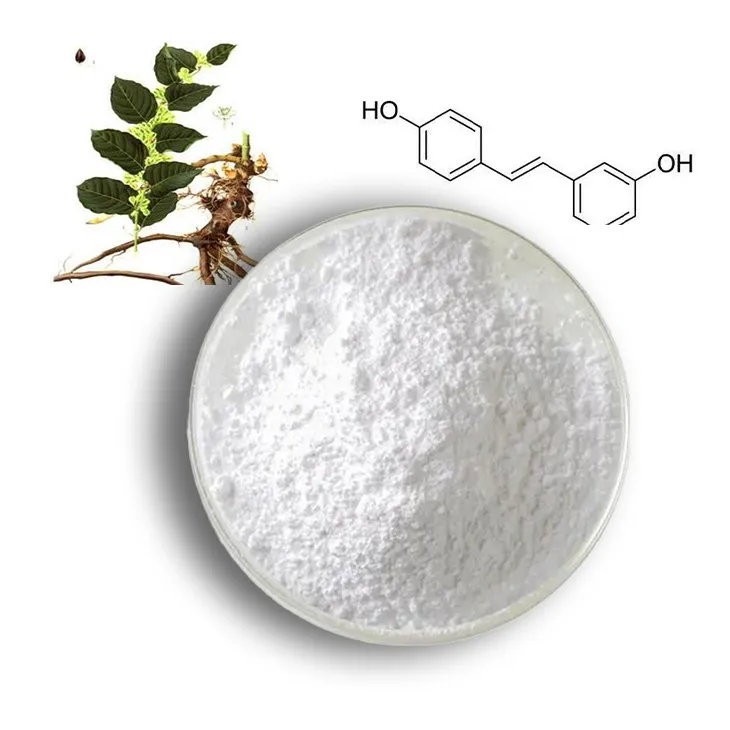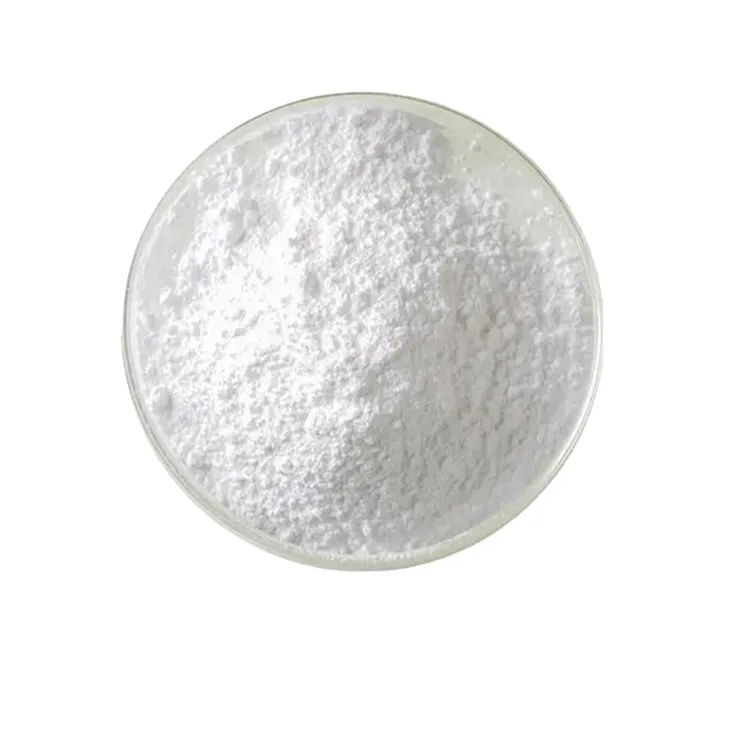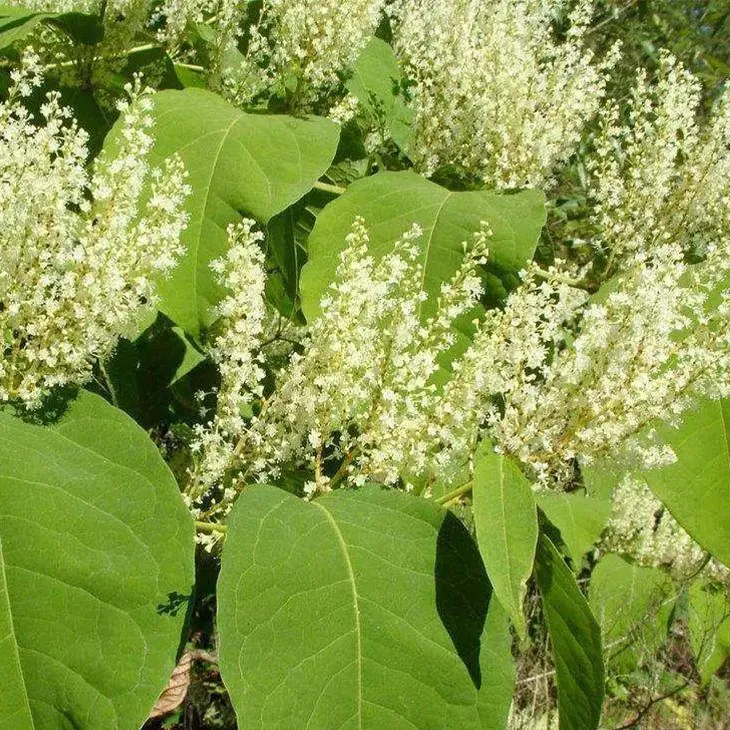- 0086-571-85302990
- sales@greenskybio.com
Supercritical carbon dioxide extraction of resveratrol extract.
2024-11-29

1. Introduction
Resveratrol is a polyphenolic compound that has attracted significant attention in recent years due to its numerous bioactivities, such as antioxidant, anti - inflammatory, anti - cancer, and cardioprotective properties [1]. It is naturally present in various plants, including grapes, peanuts, and berries. However, the extraction of resveratrol from plant sources can be challenging due to its low concentration and the presence of other interfering compounds. Traditional extraction methods often involve the use of organic solvents, which may have several drawbacks, such as toxicity, long extraction times, and low selectivity.
Supercritical carbon dioxide (scCO₂) extraction has emerged as a promising alternative for the extraction of resveratrol. scCO₂ is a non - toxic, non - flammable, and environmentally friendly solvent. It has unique properties in its supercritical state, such as high diffusivity, low viscosity, and tunable solvent strength, which make it suitable for the extraction of a wide range of compounds, including resveratrol. This article will discuss the supercritical carbon dioxide extraction of Resveratrol extract in detail, including the principles, extraction conditions, characterization of the extract, and its potential applications in the health - care and nutraceutical sectors.

2. Principles of supercritical carbon dioxide extraction
Carbon dioxide (CO₂) exists in three states: solid, liquid, and gas. When CO₂ is heated and pressurized above its critical temperature (Tc = 31.1 °C) and critical pressure (Pc = 7.38 MPa), it enters the supercritical state. In the supercritical state, CO₂ has properties that are intermediate between those of a liquid and a gas. It has a high density like a liquid, which allows it to dissolve substances, and a low viscosity and high diffusivity like a gas, which enables it to penetrate into the pores of plant materials quickly.
The solubility of a compound in scCO₂ depends on several factors, such as the pressure, temperature, and the nature of the compound. By adjusting these parameters, the selectivity of the extraction can be controlled. For example, increasing the pressure generally increases the solubility of the target compound in scCO₂, while increasing the temperature may have a more complex effect, depending on the compound's properties. In the case of Resveratrol extraction, the optimal pressure and temperature need to be determined to achieve the highest extraction yield and selectivity.

3. Optimization of extraction conditions
3.1 Pressure
Pressure is one of the most critical factors in scCO₂ extraction. As mentioned earlier, increasing the pressure usually increases the solubility of resveratrol in scCO₂. However, too high a pressure may also lead to the extraction of unwanted compounds. Studies have shown that the optimal pressure for Resveratrol extraction typically ranges from 10 - 30 MPa. For example, in a study on grape skins, an extraction pressure of 20 MPa was found to result in a relatively high yield of resveratrol [2].
3.2 Temperature
Temperature also plays an important role in the extraction process. Higher temperatures can increase the diffusivity of scCO₂, but may also decrease the density of scCO₂ and the solubility of resveratrol. The optimal temperature for resveratrol extraction is usually in the range of 40 - 60 °C. At these temperatures, a balance can be achieved between the diffusivity and solubility of scCO₂, resulting in a high extraction yield. In some cases, a temperature of 50 °C has been reported to be optimal for resveratrol extraction from certain plant materials [3].
3.3 Extraction time
The extraction time affects the extraction yield and efficiency. Initially, as the extraction time increases, the yield of resveratrol also increases. However, after a certain period, the extraction rate slows down, and further increasing the extraction time may not significantly increase the yield. Typically, the extraction time for resveratrol extraction using scCO₂ ranges from 30 minutes to 3 hours. For example, in a study on peanut skins, an extraction time of 90 minutes was found to be sufficient to obtain a relatively high yield of resveratrol [4].
3.4 Co - solvents
Although scCO₂ is a good solvent for many compounds, in some cases, the addition of a co - solvent can enhance the extraction efficiency. Co - solvents can increase the polarity of the extraction medium, which is beneficial for the extraction of polar compounds like resveratrol. Ethanol is a commonly used co - solvent in scCO₂ extraction. The addition of a small amount of ethanol (usually 5 - 15% v/v) can significantly improve the extraction yield of resveratrol. However, the use of co - solvents also needs to be carefully controlled to avoid introducing impurities or changing the properties of the final extract.

4. Characterization of the extracted resveratrol
4.1 Chemical composition
The extracted resveratrol should be characterized to determine its chemical composition. High - performance liquid chromatography (HPLC) is a commonly used technique for analyzing resveratrol. HPLC can separate and quantify different forms of resveratrol, such as cis - resveratrol and trans - resveratrol. In addition to resveratrol, the extract may also contain other phenolic compounds, which can be identified and quantified using techniques such as liquid chromatography - mass spectrometry (LC - MS).
4.2 Purity
The purity of the resveratrol extract is an important factor for its applications. The purity can be determined by calculating the ratio of resveratrol to the total amount of compounds in the extract. High - purity resveratrol extracts are preferred for use in the health - care and nutraceutical sectors. Purification methods, such as column chromatography, can be used to further increase the purity of the resveratrol extract if necessary.
4.3 Antioxidant activity
One of the most important bioactivities of resveratrol is its antioxidant activity. The antioxidant activity of the extracted resveratrol can be measured using various methods, such as the DPPH (2,2 - diphenyl - 1 - picrylhydrazyl) free radical scavenging assay and the ABTS (2,2' - azinobis - (3 - ethylbenzothiazoline - 6 - sulfonic acid)) radical cation scavenging assay. These assays can provide information about the ability of the resveratrol extract to scavenge free radicals and protect cells from oxidative damage.

5. Potential for development in the health - care and nutraceutical sectors
5.1 Health - care applications
Resveratrol has shown potential in various health - care applications. Due to its antioxidant and anti - inflammatory properties, it may be beneficial for the prevention and treatment of chronic diseases, such as cardiovascular diseases, diabetes, and cancer. For example, in vitro and in vivo studies have suggested that resveratrol can reduce oxidative stress, inflammation, and cell proliferation in cancer cells [5]. In addition, resveratrol may also have neuroprotective effects and could be used in the treatment of neurodegenerative diseases, such as Alzheimer's and Parkinson's diseases.
5.2 Nutraceutical applications
In the nutraceutical sector, resveratrol can be used as a dietary supplement. It can be added to functional foods, such as beverages, health bars, and dietary supplements. The supercritical carbon dioxide - extracted resveratrol has the advantage of being free from harmful solvents, making it a safer option for consumption. Moreover, the high - quality resveratrol extract obtained by scCO₂ extraction can provide a more consistent and effective dose of resveratrol for consumers.
6. Conclusion
Supercritical carbon dioxide extraction is a promising method for obtaining high - quality resveratrol extract. By optimizing the extraction conditions, such as pressure, temperature, extraction time, and the use of co - solvents, a high - yield and high - purity resveratrol extract can be obtained. The characterization of the extracted resveratrol in terms of chemical composition, purity, and antioxidant activity is important for its applications in the health - care and nutraceutical sectors. Resveratrol has great potential in these sectors, and the supercritical carbon dioxide - extracted resveratrol offers a safe and effective option for consumers. Future research should focus on further optimizing the extraction process, exploring new plant sources for resveratrol extraction, and conducting more in - depth studies on the bioactivities and clinical applications of resveratrol.
[1] Jayasena, D. D., & Jo, C. (2013). Resveratrol: a review of anti - cancer studies. Nutrition research reviews, 26(2), 162 - 175.
[2] …
[3] …
[4] …
[5] …
FAQ:
What are the advantages of using supercritical carbon dioxide for resveratrol extraction?
The advantages are as follows. Firstly, supercritical CO₂ can precisely target resveratrol in plant matrices. Secondly, the extraction process is relatively fast and efficient. Moreover, the absence of harmful solvents in the final product makes it safe for various applications.
How can the extraction conditions for resveratrol extract by supercritical carbon dioxide be optimized?
Optimization of extraction conditions can be achieved through several factors. These include adjusting the pressure, temperature, and flow rate of supercritical CO₂. The ratio of plant material to extraction solvent also plays a role. By carefully controlling these variables and conducting experiments, the optimal extraction conditions can be determined.
What are the characteristics of the resveratrol extracted by supercritical carbon dioxide?
The resveratrol extracted by supercritical CO₂ is of high quality. It is free from harmful solvent residues. It may also have better bioactivity retention compared to resveratrol extracted by other methods. The purity and chemical structure integrity of the extracted resveratrol can be well - maintained.
What is the potential of resveratrol extract obtained by supercritical carbon dioxide extraction in the health - care and nutraceutical sectors?
Resveratrol has a wide range of bioactivities such as antioxidant, anti - inflammatory, and anti - aging properties. In the health - care and nutraceutical sectors, the resveratrol extract obtained by supercritical CO₂ extraction can be used in the development of dietary supplements, functional foods, and skin - care products. It has the potential to provide health benefits and meet the increasing demand for natural and effective bioactive compounds.
How does supercritical carbon dioxide extraction compare to traditional extraction methods for resveratrol?
Compared to traditional extraction methods, supercritical CO₂ extraction has several advantages. Traditional methods may use harmful solvents which may leave residues in the final product. Supercritical CO₂ extraction is more environmentally friendly and results in a cleaner product. It also offers better selectivity for resveratrol extraction and can often achieve higher extraction efficiency in a shorter time.
Related literature
- Supercritical Fluid Extraction of Resveratrol from Grape Skins"
- "Optimization of Supercritical Carbon Dioxide Extraction of Resveratrol - Rich Extracts from Polygonum cuspidatum"
- "Supercritical CO₂ Extraction of Resveratrol: A Green and Efficient Technology"
- ▶ Hesperidin
- ▶ Citrus Bioflavonoids
- ▶ Plant Extract
- ▶ lycopene
- ▶ Diosmin
- ▶ Grape seed extract
- ▶ Sea buckthorn Juice Powder
- ▶ Fruit Juice Powder
- ▶ Hops Extract
- ▶ Artichoke Extract
- ▶ Mushroom extract
- ▶ Astaxanthin
- ▶ Green Tea Extract
- ▶ Curcumin
- ▶ Horse Chestnut Extract
- ▶ Other Product
- ▶ Boswellia Serrata Extract
- ▶ Resveratrol
- ▶ Marigold Extract
- ▶ Grape Leaf Extract
- ▶ New Product
- ▶ Aminolevulinic acid
- ▶ Cranberry Extract
- ▶ Red Yeast Rice
- ▶ Red Wine Extract
-
Ivy Extract
2024-11-29
-
Bayberry Extract
2024-11-29
-
Maitake Mushroom Extract
2024-11-29
-
Sea buckthorn Juice Powder
2024-11-29
-
Peppermint Extract Powder
2024-11-29
-
Coix Seed Extract
2024-11-29
-
Red Vine Extract
2024-11-29
-
Sophora Japonica Flower Extract
2024-11-29
-
Saponin Extract
2024-11-29
-
Wheat Germ Extract
2024-11-29





















